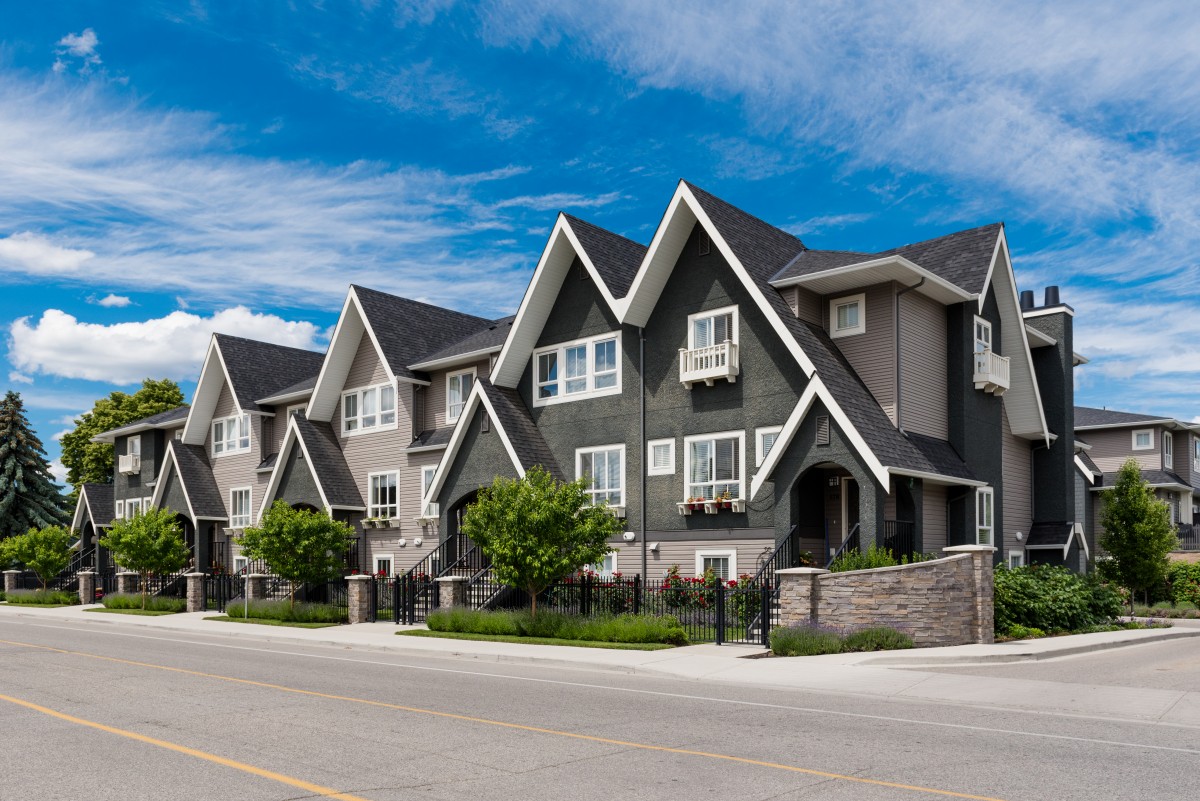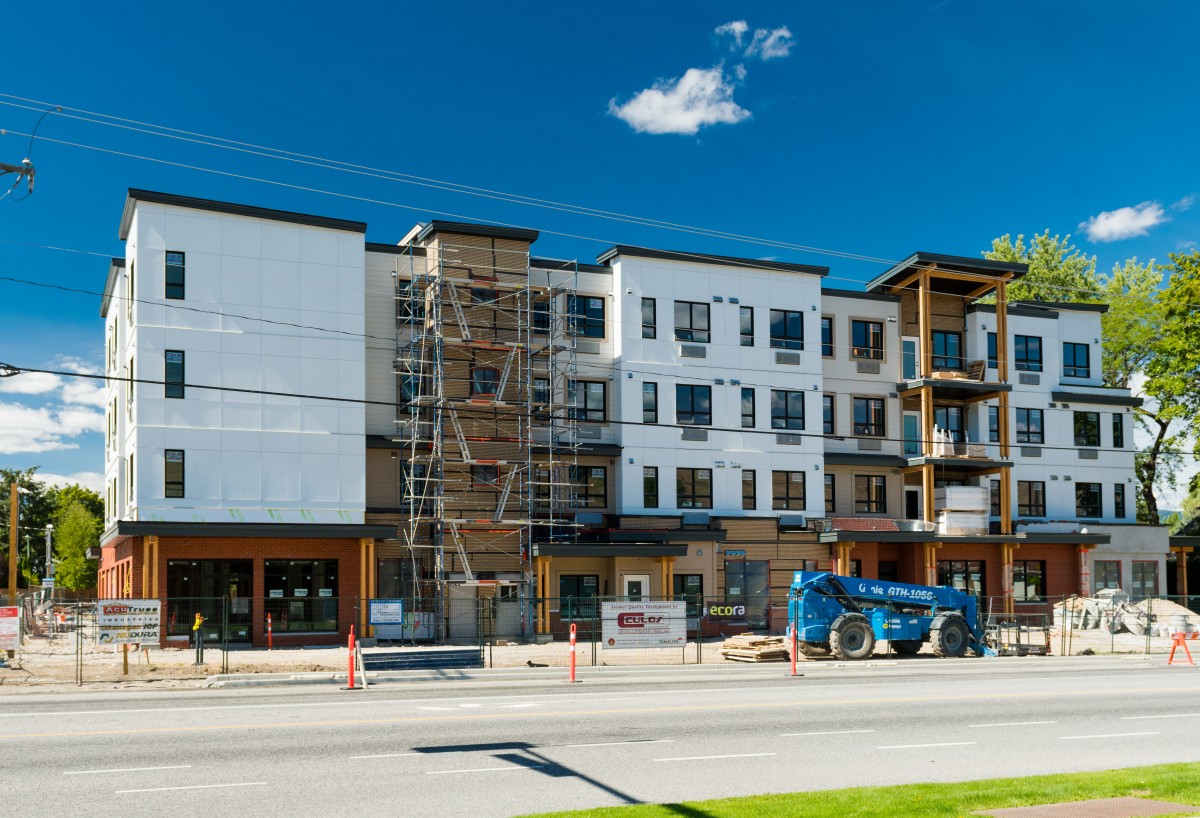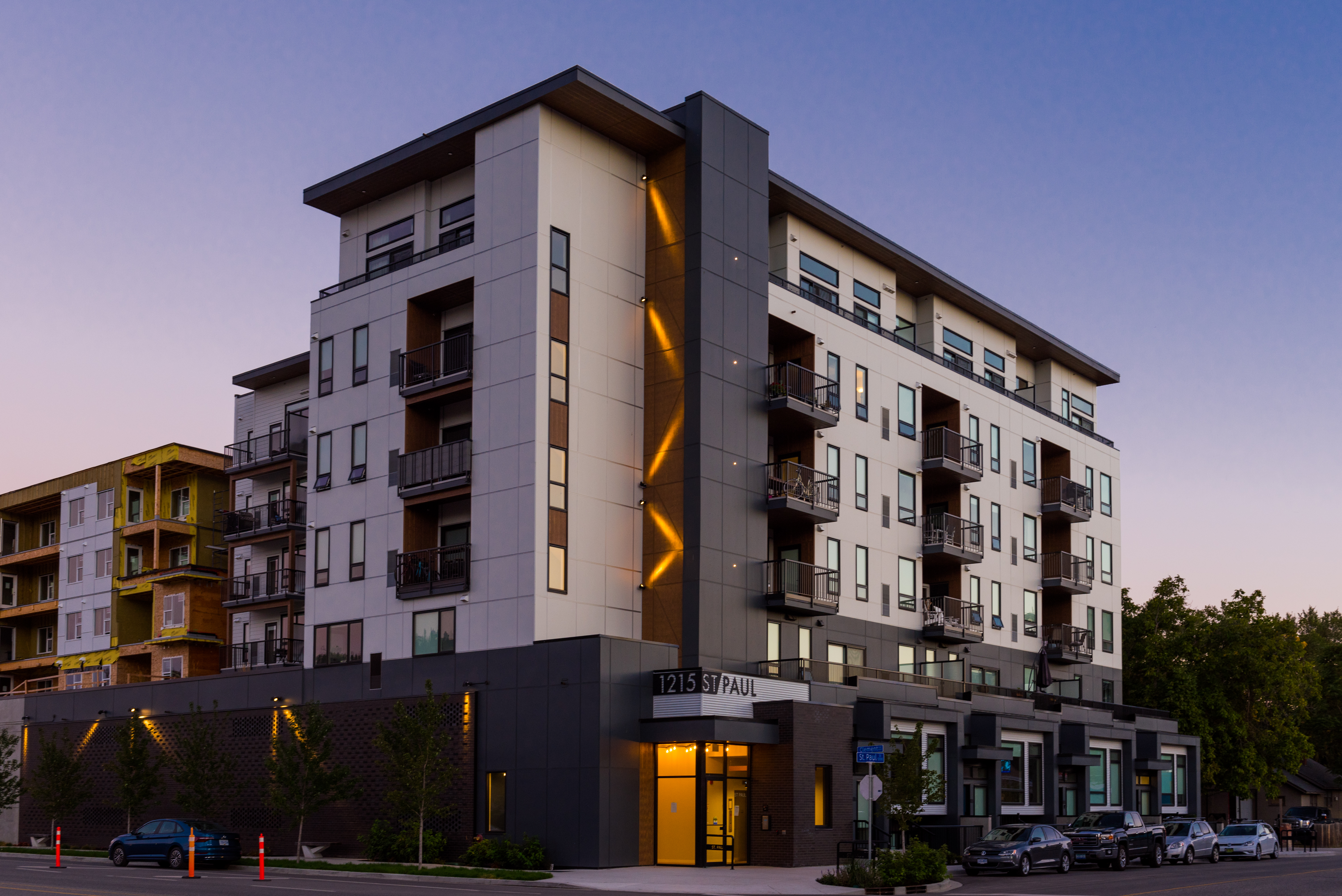A Variety of Homes in the Neighbourhood
New smaller housing options will make it more affordable to rent or buy
With a population that’s increased by approximately 62 per cent since 1996*, our City is no longer a sleepy tourist town. In fact, it’s one of Canada’s fastest growing, and we’re expected to add more than 50,000 residents by 2040.
But where will more than 200,000 Kelowna residents live in 2040? With a median list price of almost close to a million for a single-detached home, the dream of living in a house with a backyard in the burbs is out of reach for most. Plus, 55 per cent of the City’s land is reserved for agricultural use and much of the remaining unused land is on hillsides too steep to build on. More urban sprawl is not an option in Kelowna.
So instead of growing out, our City planners are taking a unique approach. Growing inwards.
Growing inwards with infill housing
Outside of the five Urban Centres the core area of the City typically consists of single-detached home neighbourhoods. As these neighbourhoods are low density they can accommodate growth through infill housing, a variety of housing types that are primarily ground-oriented.
Infill units are described as small, low-rise homes with street level entrances and some green space for each household—much of what single-detached homes offer, but on a much smaller footprint. These types of homes are also cheaper to build and service than housing in a new subdivision that requires utility infrastructure such as water, sewer, street lighting and other utilities to be built. Infill homes tie into the existing infrastructure in an already developed neighbourhood.

There are no shortage of options for infill homes. They could come in the form of a new duplex or multi-plex, or even a single unit such as a laneway home or carriage house. And they could be added to a lot with an existing single-detached home. Or a lot could be completely redeveloped with a small townhome project or multi-plex complex. Other options include converting a single-detached home into a duplex or the basement of a house into a suite.
These homes may be built by a developer and sold as strata units, or a homeowner can be the developer and have the infill units built on their property for rental income.
Changing neighbourhoods
But how do people feel about their neighborhoods changing? “Some citizens are hesitant, but in reality, there have been few complaints in the areas already dotted with infill housing,” said James Moore, Infill Housing Planning Manager for the City of Kelowna. “Compared to most other development-related changes, infill has achieved a lot of public acceptance,” he added.
Moore also said that there’s been a big shift in how the development community has responded to growth, primarily due to home prices and the lack of land in mid-size and large cities. And it’s not only in Kelowna. In November 2023, the provincial government announced new legislation to deliver more small-scale, multi-unit housing through new zoning rules that will allow for accessory dwelling units in all BC communities.
Revealing a demand for infill housing
Prior to 2017 there were limited options for infill housing in Kelowna, but planners knew that with the City’s growing population they had to try it out. “When we started this work, the core area was still zoned for single-detached housing, so we didn’t know if there would even be a demand for infill housing,” said Moore. “We decided to open up the opportunity and see what would happen,” he added.

It turned out there was demand. A lot. And once that demand was revealed, the builders followed suit. Since 2017 more and more of them are building infill. And according to Moore, the builder community now even has awards exclusively for infill housing.
Turns out Moore and his team were ahead of the curve. Kelowna’s infill housing program has achieved more uptake in units than comparable programs in many other North American cities of its size. And they collaborate with other cities to learn best practices such as how to maximize affordability and protect greenspace.
Keeping families together
One of the unexpected benefits of infill housing is its ability to help improve family dynamics. Empty nesters can supplement their income by building a rental unit on their property, or keep their family nearby. This could be by having aging parents or adult children live onsite but in separate quarters through infill housing.
City of Kelowna employee Clint McKenzie had a carriage home built on his property to help his family long term. “We have four kids and each one will take their turn at renting out the carriage house at an affordable rent so they can save money for a down payment on their own home one day,” said McKenzie.
McKenzie is thinking long term as well. Options could include having his wife’s mom live in the carriage house so they can assist her as she ages, or he and his wife could move into it. “Years from now, we might even move into the carriage house and rent out the main house, so we can supplement our retirement funds,” he added.

The future of infill housing
Infill housing allows neighbourhoods to naturally evolve as our population grows. Through our rapid growth, Kelowna has become a much more diverse and inclusive City, and as a result we need different housing types at different affordability levels and for different stages of life. Infill housing is one way to address the needs of our diverse population on a more equitable basis.
In the City’s 2040 Official Community Plan, the expansion of infill housing in the core area is a priority as a way to increase gentle densification. As of 2023, approximately 100 units of infill housing are being built a year. The goal is to expand infill housing development projects to 150 to 250 units per year by 2040.
“Infill housing is where your kids and grandkids are going to live,” said Moore. “Neighbourhoods need to be able to evolve and house more people and infill housing will integrate with your neighbourhood and provide opportunities such as allowing you to stay in your community for all stages of your life,” he added.




